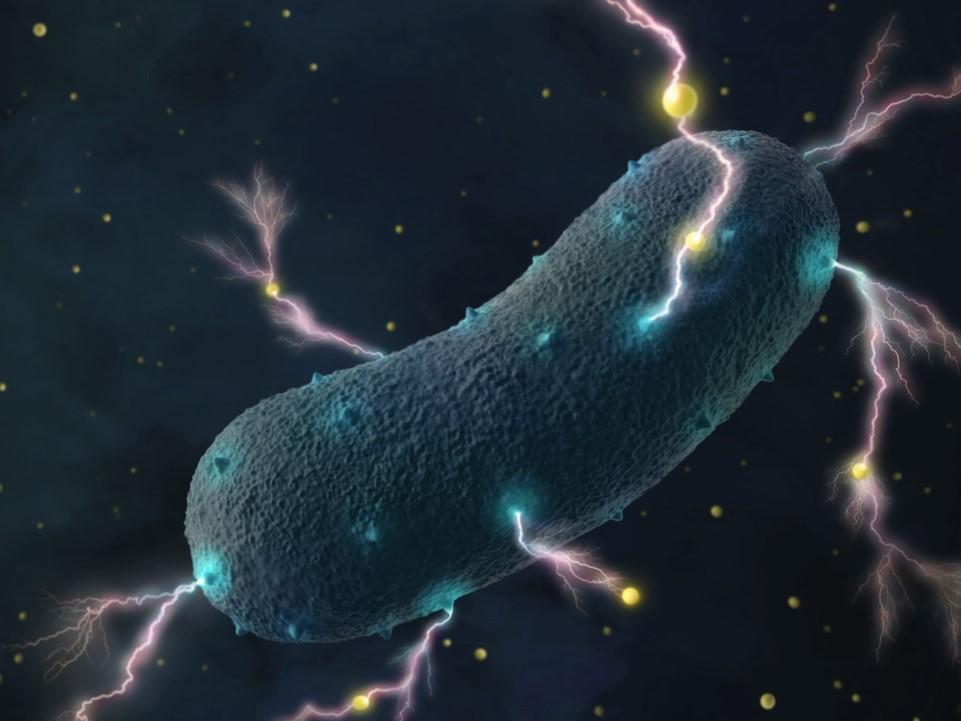Stomach bug and probiotic bacteria produce electricity and could build 'living battery', scientists discover
Hospital superbugs to probiotic lactobacilli capable of 'electrogenesis' when deprived of oxygen in the gut

Your support helps us to tell the story
From reproductive rights to climate change to Big Tech, The Independent is on the ground when the story is developing. Whether it's investigating the financials of Elon Musk's pro-Trump PAC or producing our latest documentary, 'The A Word', which shines a light on the American women fighting for reproductive rights, we know how important it is to parse out the facts from the messaging.
At such a critical moment in US history, we need reporters on the ground. Your donation allows us to keep sending journalists to speak to both sides of the story.
The Independent is trusted by Americans across the entire political spectrum. And unlike many other quality news outlets, we choose not to lock Americans out of our reporting and analysis with paywalls. We believe quality journalism should be available to everyone, paid for by those who can afford it.
Your support makes all the difference.Microbes in your stomach may have a shocking secret as scientists have found many species of bacteria are able to produce electricity.
Scientists from University of California, Berkeley, have discovered that listeria bacteria, which contaminate food and cause listeriosis, start producing power under certain environmental conditions – such as a lack of oxygen.
If grown in a flask with electrodes inserted these species produce a measurable current and scientists are looking at ways this could be refined and exploited to generate electricity at waste treatment plants or power small electronics.
Previously the only “electrogenic” bacteria species were thought to live in harsh, mineral-rich environments like acidic mines and lake beds.
The Berkeley team found abundant examples of gangrene-causing clostridium bacteria and hospital-acquired infectious strains capable of making sparks fly.
They also found these properties in species of beneficial bacteria, like the lactobacilli which are contained in probiotic drinks for the health promoting effects and are used in yoghurt and cheese production.
“The fact that so many bugs that interact with humans, either as [disease causing] pathogens or in probiotics or in our microbiota or involved in fermentation of human products, are electrogenic – that had been missed before,” said Professor Dan Portnoy, a microbial biology expert who is one of the authors of the study published in Nature on Wednesday.
“It could tell us a lot about how these bacteria infect us or help us have a healthy gut.”
Bacteria produce electricity as part of their metabolism. In humans our cells use the oxygen we breathe to drive the transfer of energy-carrying electrons locked up as sugars and other molecules in our food, fuelling every cell.
But single-celled bacteria living in low oxygen environments don’t have that option.
They have to use different chemical elements to promote this flow of electrons. In the case of electrogenic bacteria found in acid lakes or mines they are effectively breathing minerals like iron or manganese, as humans use oxygen.
As these minerals are outside the cell, the electrons have to flow throw several steps to reach them – effectively an internal current conducting electrons as they would along a copper wire.
In gut bacteria, when they’re deprived of oxygen they usually have access to an abundance of one very effective electron acceptor called flavin. This molecule is made up of vitamin B12 which is essential to the action of all of our cells and so is usually abundant in the body.
The researchers found that gut bacteria produce just as much electricity, around 500 microamps, as those using mineral exchange despite a simplified method.
“It seems that the cell structure of these bacteria and the vitamin-rich ecological niche that they occupy makes it significantly easier and more cost effective to transfer electrons out of the cell,” said Dr Sam Light, who is first author of the study.
“We think that the conventionally studied mineral-respiring bacteria are using extracellular electron transfer because it is crucial for survival, whereas these newly identified bacteria are using it because it is ‘easy’.”
Join our commenting forum
Join thought-provoking conversations, follow other Independent readers and see their replies
Comments